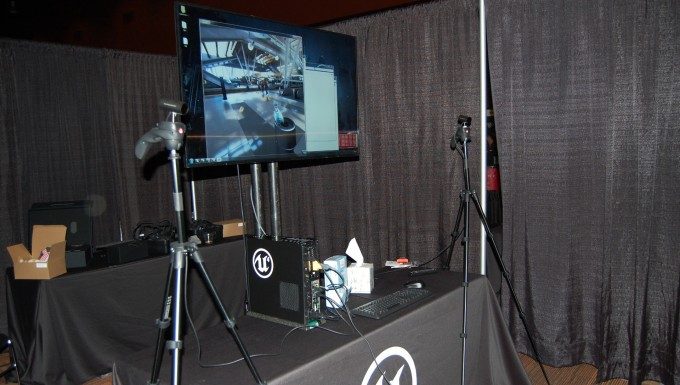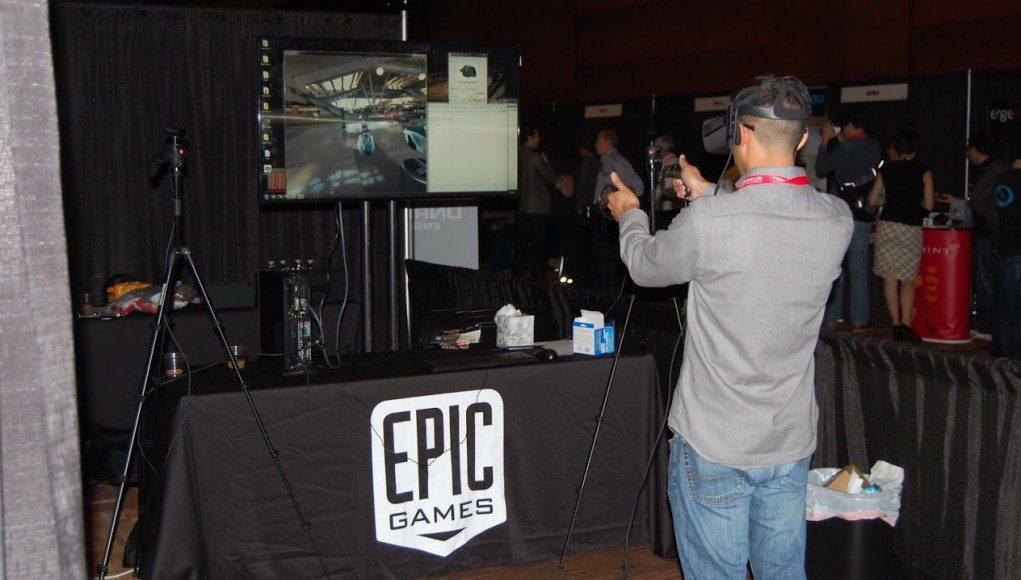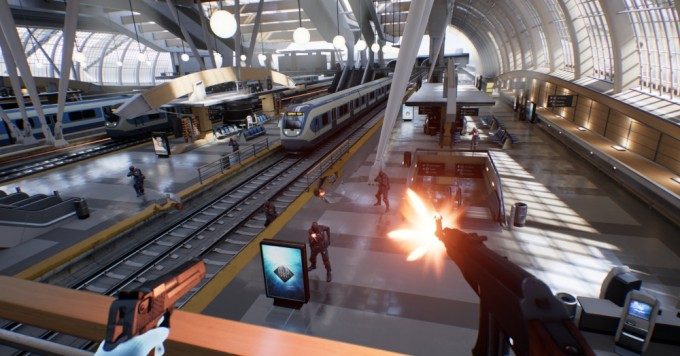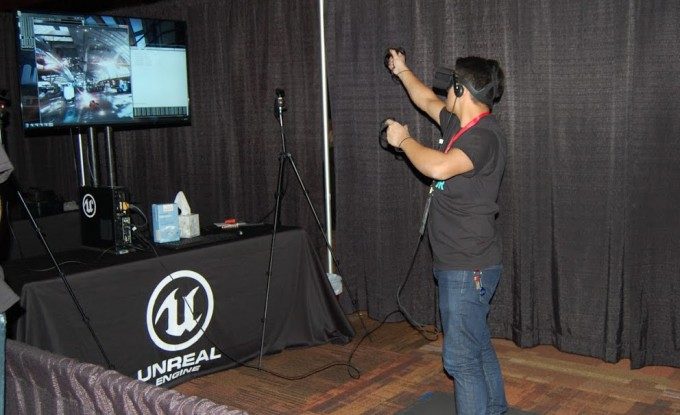Guest writer Michael Glombicki attended SEA-VR, a Seattle based virtual reality event, yesterday where local developers Epic Games – creators of Unreal Engine – and went hands-on with their latest Oculus Touch enabled, first person, VR shooter ‘Bullet Train‘ which debuted at Oculus Connect this year.
 Michael Glombicki is Seattle based software engineer who has worked at both Boeing and Microsoft. He also has a habit of backing any Kickstarter campaign related to VR.
Michael Glombicki is Seattle based software engineer who has worked at both Boeing and Microsoft. He also has a habit of backing any Kickstarter campaign related to VR.
Attendees at this year’s SEA VR had the chance to try Epic Games’ new Bullet Train demo. The demo was the first opportunity for the public to try Oculus Touch outside of Oculus Connect. More importantly for Epic, this demo was another showcase of the powerful VR support it has been building into the Unreal Engine for the past couple of years. I went hands on with the first-person shooter and it was an impressive experience.
See Also: Hands-on: Oculus Touch is an Elegant Extension of your Hand for Touching Virtual Worlds
The demo started like most VR tech demos, with the exhibitor handing me an Oculus Rift and some headphones. The key difference was that I was then handed a pair of Oculus Touch motion controllers. Once the game started, I found myself standing in a train car with a pair of floating hands. The game then went through a quick walkthrough of how to pick-up guns and use the combined bullet time/teleportation power.

Because player movement in VR is often a cause of motion sickness, Epic decided to give players the ability to teleport between a handful of predefined locations. This is not the first VR game to make use of the teleportation mechanic, but the lighting and sound effects that accompany it were better than many of the other implementations that I’ve seen.
After practicing with the guns and teleportation, the train pulled up to the station where I was met by a group of enemy soldiers. Epic built in a number of exciting ways to dispatch enemies from simply shooting them to using bullet time to pluck their incoming rounds out of the air and throw them back at lethal speed. When you run out of ammo, you can even throw your gun at the enemies to finish them In the final stage of the demo, a large boss robot crashed through the ceiling and began firing missiles in my direction. I quickly found out that guns were ineffective at this point and so I had to resort to pulling the incoming missiles out of the air and launching them back at the boss.
Players can’t die in the demo, so I had the opportunity to take my time and play around with the motion controllers. The tracking was good enough that I could toss guns from one hand to the other with ease. The only major limitation I encountered was when the controller left the view of both of the tracking cameras (so no behind-the-back trick shots, unfortunately).
This is an area where the HTC and Valve’s Lighthouse tracking prevails, but overall Oculus Touch felt like a more comfortable and consumer ready product. Epic has developed the Unreal Engine in a way that all motion control commands go through a common interface so that the same gameplay code could be deployed to other platforms, like the Vive, in the future with only minor tweaks.
While Bullet Train was unquestionably enjoyable, it still had some of the rough edges that come with any early technology demo. Like the bad guys in the Time Crisis games of the late 90’s, the enemy foot soldiers in Bullet Train had very rigid movement patterns and would often run to a specific position and stand in place until you shot them.
According to Epic’s Lead VR Engineer, Nick Whiting, this was the first time that they’ve built a demo without content that was adapted from previous, non-VR projects. It was also the first time working with the Oculus Touch motion controllers. The development team designed the demo so that it would run smoothly on a computer with the Oculus Rift’s recommended hardware specifications, which was noticeably lower than the computing power they were used to working with.
While developing Bullet Train over a period of six weeks, Epic Games paid particular attention to achieving smooth 90 FPS performance. To accomplish this, the development team had to make a number of VR-specific optimizations to the Unreal Engine and so these improvements will be available for future developers.
Nick was non-committal when asked about whether the source of Bullet Time would be released like previous Epic Unreal Engine VR demos, so future opportunities to try the demo may be limited to Epic’s road show demos at other VR shows and meetups like SVVR and VRLA.









